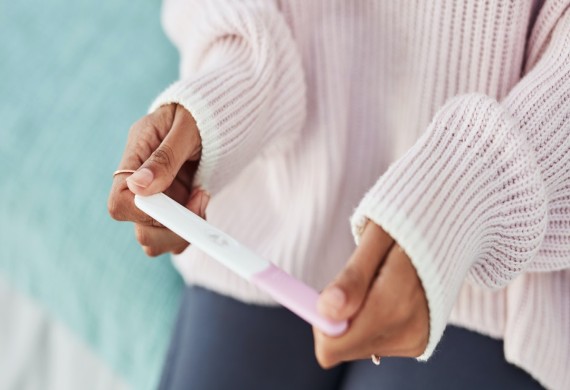
Up To 15 Percent of Women are Infertile; IVF is Becoming More Popular as a Specialized Industry
By: WE Staff | Wednesday, 13 July 2022
As approximately 12–15% of all married young women in India, or 3 crore people, are unable to conceive, infertility is becoming a problem. For in-vitro fertilisation (IVF) professionals, a growing industry that is becoming more organised, this is creating a significant revenue potential. IVF is a sophisticated set of operations used to improve fertility, stop genetic issues, and aid in child conception.
Couples delaying pregnancy after marriage owing to job and life stress, lateness for treatments, female tubular blocks, pollution, poor diet and living conditions, and low male sperm counts are the main causes of infertility.
Another significant factor, according to Dr. Kshitiz Murdia, chief executive officer of Indira IVF, India's largest IVF chain with 110 centres, is the egg quality of women declining after 30-35 years of age.
The average number of children a woman would have over her lifetime, or the Total Fertility Rate (TFR), has decreased, according to the National Family Health Study (NFHS), from 2.7 in 2005–2006 to an all-time low of 2.1 in 2019–21.
Due to the high cost of a 2- to 6-month cycle, just 1% of couples pursue therapy. "We get about 80,000 enquiries every month, but only 9,000 walk in for treatment and of them only about 5,000 get investigated. The success rate is about 73%-74% and is improving year after year," says Dr. Murdia.
He claims that 1,200–1,700 independent IVF clinics in India perform roughly 2-2.5 lakh treatment cycles. Because of India's high success rate and affordable treatment, couples also travel there from nations like Bangladesh and other SAARC nations. Similar to Indira IVF, Bengaluru-based Nova IVF is a chain with more than 50 locations, and there are numerous additional smaller regional franchises.
Most Viewed
- 1 Women's Health Startup HerMD Closing Doors Amid Industry Challenges
- 2 5 Famous Women in Indian Armed Forces
- 3 Saudi Women No longer Require Male Permission for Clothing Choices, says Prince MbS
- 4 Kolkata Medtech Startup Innovodigm Raises Rs 5.5 Crore Seed Funding Led by IAN Group
- 5 Yamunanagar's Kashish Kalra Honoured after Securing 111th Rank in UPSC Civil Services Exam
- 6 Madurai Appoints Its First Woman Corporation Head
- 7 IAS Vijayalakshmi Bidari Appointed as the new Nagpur Divisional Commissioner
- 8 American Entrepreneur Lucy Guo Overtakes T Swift to become Youngest Female Billionaire
- 9 ICC Women's World Cup 2025 Trophy Showcased at Indore's Holkar Stadium
- 10 Aparna Saxena's Beauty Venture AntiNorm Launches in India
- 11 Vidya Nataraj Co-Founded BlueStone Jewellery & Lifestyle files IPO
- 12 5 Women Freedom Fighters of India
- 13 Dr. G Krishnapriya appointed as CEO for Trichy
- 14 M3M & Sirona Partner to Introduce Menstrual Hygiene Vending Machines in 15 Locations
- 15 Punjab Govt launches SHE Cohort 3.0 Supporting Tech-led Women Startups
- 16 Indian origin Lawyer, Sweena Pannu appointed as the US New Superior Court Judge
- 17 The Aurora Tech Award recognizes 4 Indian Women-led Startups
- 18 Kerala's Republic Day parade featured an all-female tableau
- 19 Manisha Kabbur Becomes Karnataka's First Woman International Karate Coach
- 20 Director K. S. Ravikumar's Daughter Maalica Ravikumar Launches Life Coaching Company 'Evergrowth Academy' for Women
- 21 Leezu's Raises Pre-Seed Funding to Accelerate Growth in Sexual Wellness Industry
- 22 Sattu: Super-easy summer drink for PCOS gut healing
- 23 Swathi Nelabhatla creates Sitha App, India's First Women-Exclusive Gig Platform
- 24 7 Timeless Female Kathak Dancers & their Iconic Legacies
- 25 Meet 7 Iconic Women Architects of Modern India & their Most Impactful Work
- 26 This Woman-led Insuretech Startup is Helping Bridge the Education Financing Gap in India
- 27 Women Leaders Share Lessons Learnt from India Women's WC Win
- 28 5 Enterprising Women Founders Powering Singapore's Tech & Innovation Landscape
- 29 4 Women. 4 Stories. One Vision for Smarter, Stronger Healthcare
- 30 Global Gender Gap Narrows to 68.8%, But Full Equality 123 Years Away: WEF Report 2025
- 31 Changemakers: 7 Women Entrepreneurs Taking the Make in India Movement Forward
- 32 Meet Lucy Guo, The Youngest Self-Made Female Billionaire Disrupting Tech
- 33 How Women are Driving India's Festive Online Shopping Surge






